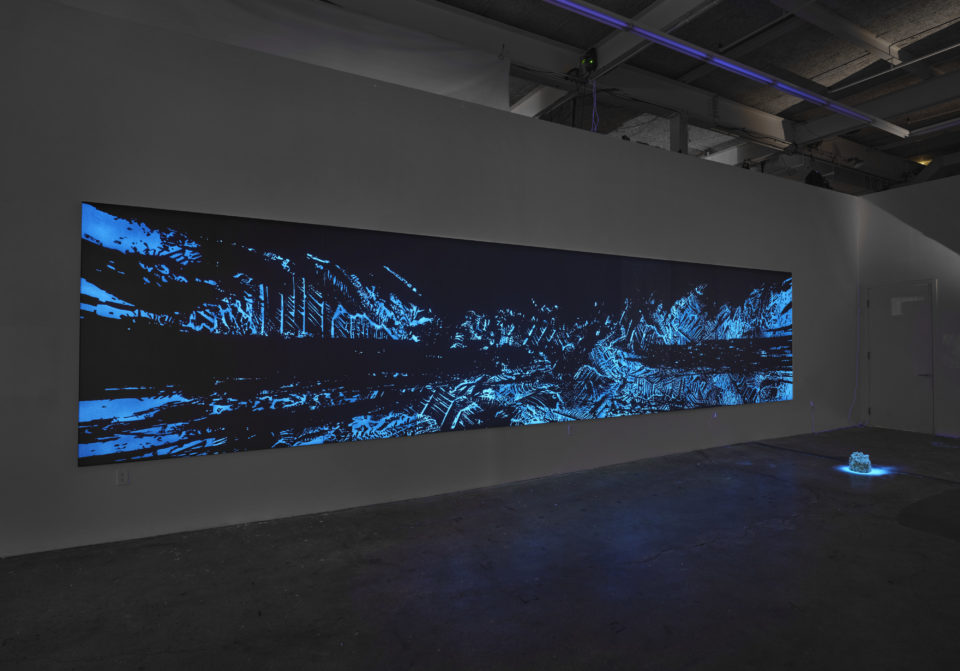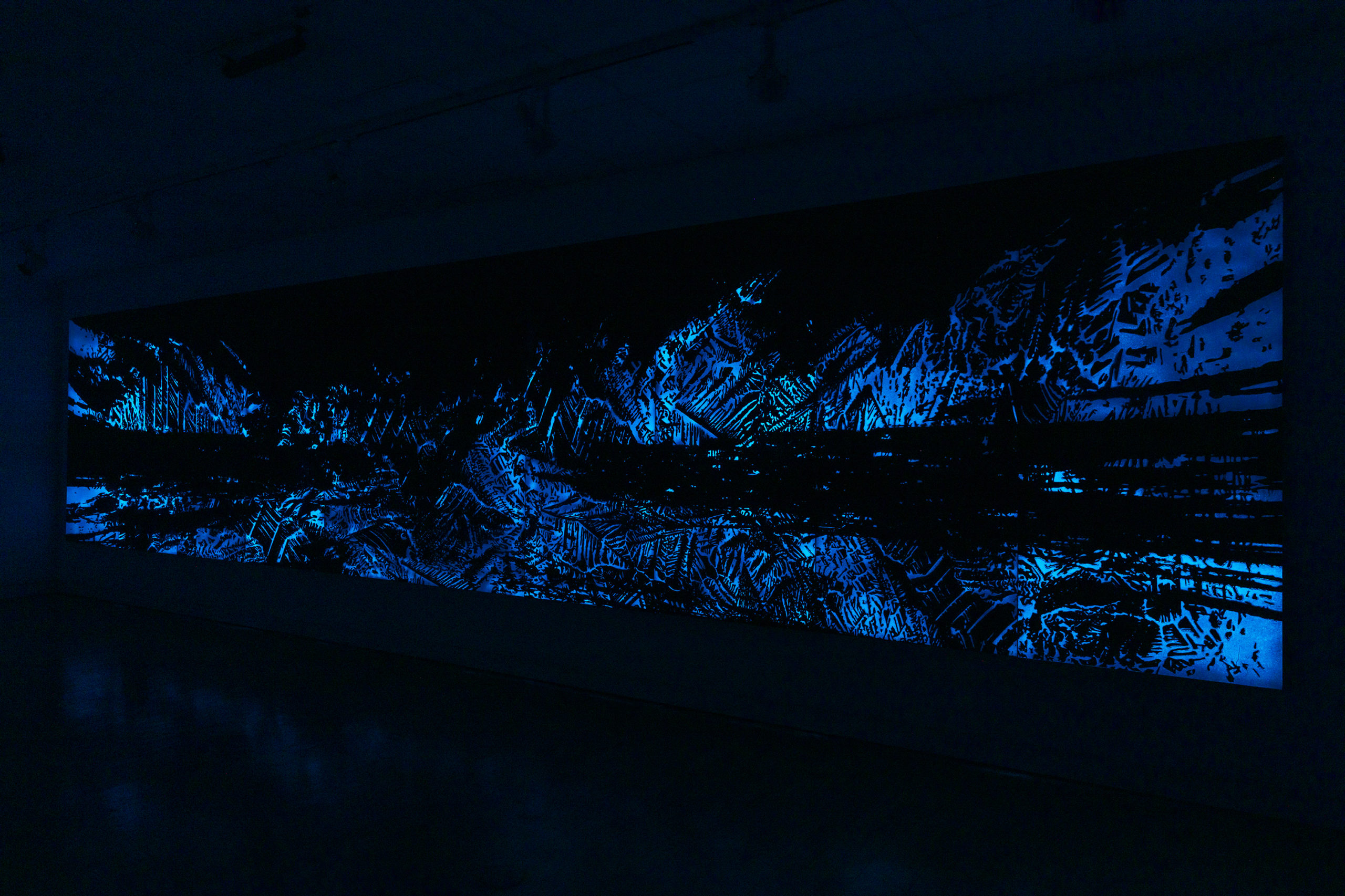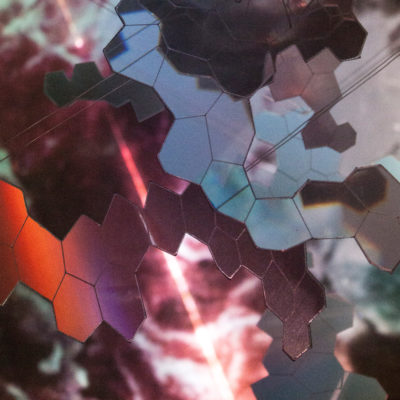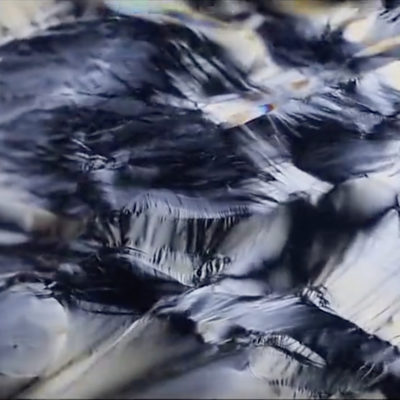Installation with Strontium Aluminate, Kopp Glass 40 filter, UV light, audio of deep-sea / surge glacier currents captured via goPro, sea sponges.
Ancient Voices depicts the slow decay of the echoes of the past, forming relationships between the blue bioluminescence of an atolla jellyfish, and the cerulean glaciers in the northern hemisphere. The phosphorescent pigment, strontium illuminate, has a half-life of 20 years which coincides with the timeline when climate change is expected to wreak havoc on ecological systems.
Inspired by arctic bio/geological systems, Ancient Voices induces a visceral sensation of the sublime, ego-loss, and unity. Viewers navigate in the dark in a discombobulated state, prompted by the lack of spatial awareness and blurred interior. In a moment marked by political and ecological precarity, the gallery acts as a space for ritual, reflection, and fantasy in search of moments of solidarity and human / non human kinship. The installation looks to nature as a means to express humanity’s interconnectedness with one another and the natural world.

Shohei Katayama is a Japanese American artist living in Pittsburgh, PA. His work includes line drawings, sculpture and conceptual installation art. Utilizing his art as a catalyst for environmental conversations, his work examines the underlying patterns and forces of nature by showcasing unseen relationships in ecology. Katayama uses materials that embodies the philosophy associated with ecological examination. Through his art, Katayama demonstrates the entanglements that are present between such systems and illustrates the disruptions that can occur when individual components are manipulated.
Katayama received a B.A. in Studio Art from Bellarmine University (2010), undertook additional training in glass blowing with Ché Rhodes at the University of Louisville, and his MFA from Carnegie Mellon University in 2019. He is the inaugural recipient of the MTV:REDEFINE award, received the Outstanding Achievement in Contemporary Sculpture Award by the International Sculpture Center, the Frank-Ratchye Fund for the Art at the Frontier Award, among others.

 EDGE OF LIGHT
EDGE OF LIGHT Virtual Opening & Viewing
Virtual Opening & Viewing